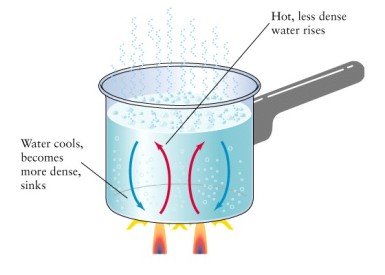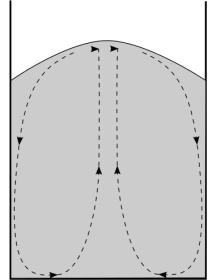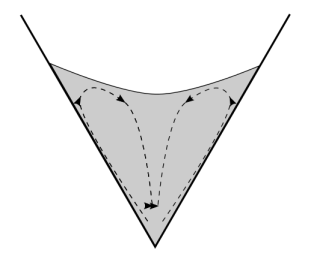Perhaps you’ve been working for a long period of time and you’re suddenly craving some nuts. Oh, how convenient, there happens to be a container of mixed nuts next to you. But as you open the lid, you make a horrifying discovery – all those large, pesky Brazil nuts have wormed their way to the top (unless you love Brazil nuts in which case it will be a more pleasing discovery).
To generalise, after you shake a container of many differently-sized objects, the large ones tend to be found at the top. Scientists, being a very creative bunch of people, named this phenomenon ‘the Brazil nut effect’ (at least it isn’t something like ‘the big things go to the top effect’).
The issue with the Brazil nut effect is that the large nuts have a greater mass, and should gradually sink to the bottom of the container, as dictated by gravity. This phenomenon is in truth more complicated than it seems, and can be considered as the amalgamation of many mechanisms.
If you were to shake the container up and down with enough acceleration, you can momentarily cause the Brazil nuts to jump. In a process called percolation, a gap is left under jumping Brazil nuts that smaller nuts can fill, so that after the Brazil nuts have settled back down, they happen to be at a greater height than before. Contrarily it would be difficult for Brazil nuts to fill in the gaps left by jumping smaller nuts.
Secondly, have you noticed how, even though a radiator is situated only on one wall of a room, heat can be transferred all around the room? Warm air is less dense than cold air so it rises; however when it reaches the top of its container it cools down and falls. This flow of heat is called convection, and is the main method by which fluids distribute heat.

A similar process happens in a container of similarly-sized grains. After some shaking, grains tend to rise in the middle and fall down the walls of the container, a process called granular convection. If you picture a Brazil nut within a sea of grains, you can see that it will gradually find its way to the top of the grains due to upwards convective flow, but it will tend to stay on the surface because it’s too large to follow the downwards convective flow.

Additionally, if the larger object has a lower density than the smaller objects, then it will easily float to the top like a table tennis ball on water.
Many smaller factors play a role in contributing to the Brazil nut effect, such as friction, air pressure, and the shape of the container. In fact if you were to use a conical container (narrow at the bottom and wide at the top) instead of a cylindrical container, the direction of granular convection is reversed and you may find Brazil nuts at the bottom instead.

Whether you’re a fan of the Brazil nut effect or not will depend on the choice of snack of course. Granular convection is your friend if you want to find fluffy popcorn kernels.
Yanhao

Now that’s something I’ve always wondered about. Thank you for explaining it!
LikeLiked by 2 people
I feel the same way about coarse-ground coffee. Yes, I know it’s a coarse grinding method but a little uniformity couldn’t hurt, I don’t want a random bean up top, that’s a waste of coffee surface area! (why yes, I’m somewhat of a coffee snob)
LikeLiked by 2 people
I like it!
LikeLike